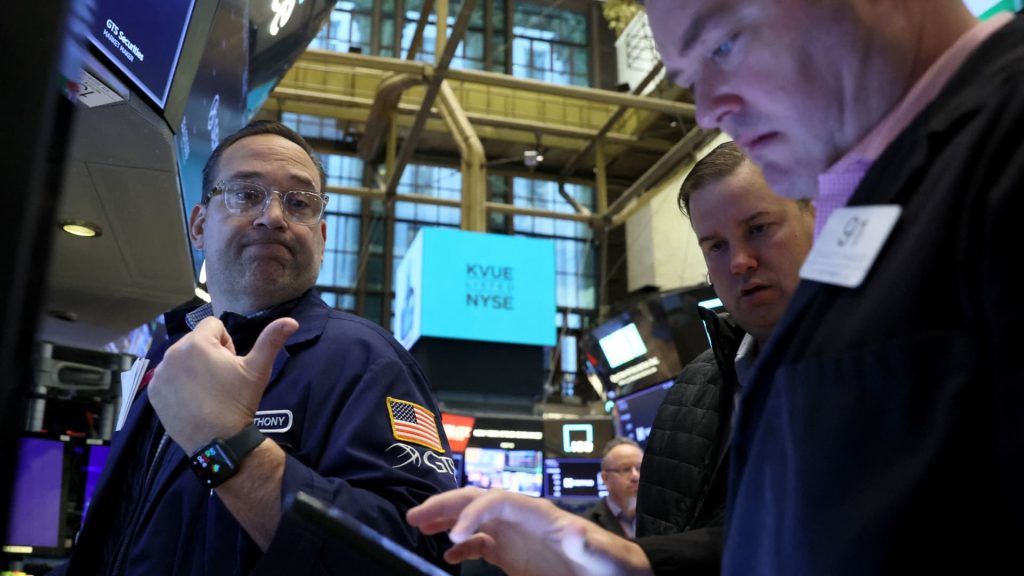The S & P 500 has been in an epic trading range between 3,800 and 4,200 for seven months, which Julian Emanuel at Evercore ISI has called (in deference to Seinfeld) “A Show About Nothing.” His point is that despite all the worries, the major index has held up, albeit in a trading range. Still, the discussion among market watchers this weekend was all about divergences. Simply put: the big indexes are doing OK, but the average stock is not. And that is a problem. Big-cap tech is back but not a lot else If you just owned the top seven stocks in the S & P 500 , you’d think this was a rip-roaring quarter for passive investors in the S & P 500. The top S & P 500 stocks in Q2 by market capitalization Apple up 5.3% Microsoft up 7.8% Alphabet up 1.7% Amazon up 2.3% Berkshire Hathaway up 2.3% NVIDIA up 4.9% Meta up 9.8% So why is the S & P 500 up a measly 0.6% for the quarter? Because the middle and lower tiers of the market are not looking great. You can see this just by looking at the Invesco S & P Equal-Weight ETF (RSP), which weights each stock in the S & P 500 by equal weight, not market capitalization. Market cap vs. equal weight S & P 500 in Q2 S & P 500 up 0.6% Equal-weight S & P 500 down 1.1% There is a particularly large divergence in technology this quarter: Market cap vs. equal weight Technology S & P 500 in Q2 S & P 500 Technology: up 0.2% Equal-weight: down 6.1% What this tells us is that the average stock, and particularly the average technology stock, is underperforming the market. The indexes are holding up, but the foot soldiers are falling This is a classic divergence: the averages are holding up, but the foot soldiers are falling. The advance/decline line for the NYSE has been struggling since mid-April, and the advance/decline for the Nasdaq Composite was at a new 52-week low earlier this week. Another simple momentum indicator is the number of stocks above their 200-day moving average. In the S & P 500, this peaked at a little over 70% in early February. It fell to 36% at the height of the banking crisis at the end of March, tried to rally, but has again fallen back and today is at 48%. The simple way to interpret this is that less than half of the stocks in the S & P 500 are in an uptrend. “When markets diverge like this, the averages versus the average stock, it doesn’t end well,” Frank Gretz at Wellington Shields said in a note to clients Friday. “As buying power is depleted, it’s typically the smaller or secondary stocks that give it up first.” “It’s the bigger stocks that hold up. Since these dominate the averages, the averages hold up as well,” he added. “This creates the divergences between the averages and measures like the A/D Index and stocks above their 200-day.” It’s tempting to turn all of this upside down and say, hey why won’t the big cap stocks drag up all the other stuff, rather than the other way around? Gretz notes that “it doesn’t work that way. These divergences are about depleted sideline cash, and that’s typically only restored in a correction…You do have to be careful of falling into the trap of thinking these are immune, thinking the few will drag up the many.” Lowry, the nation’s oldest technical analysis service, also chimed in this weekend, noting these negative divergences “provides further confirmation of a narrowing market where fewer stocks are doing the heavy lifting.” Finally, the sector leadership does not exactly instill confidence either. It’s all defensive: S & P 500 leadership sectors in Q2 Consumer Staples up 3.3% Health Care up 3.2% Utilities up 2.0% The cyclical and growth sectors are all lagging: Sector laggards in Q2 Technology up 0.1% Consumer Discretionary down 1.6% Industrials down 1.7% Energy down 3.1% Banks down 9.2% “This is not a typical bull market alignment,” Lowry noted.
Read the full article here
